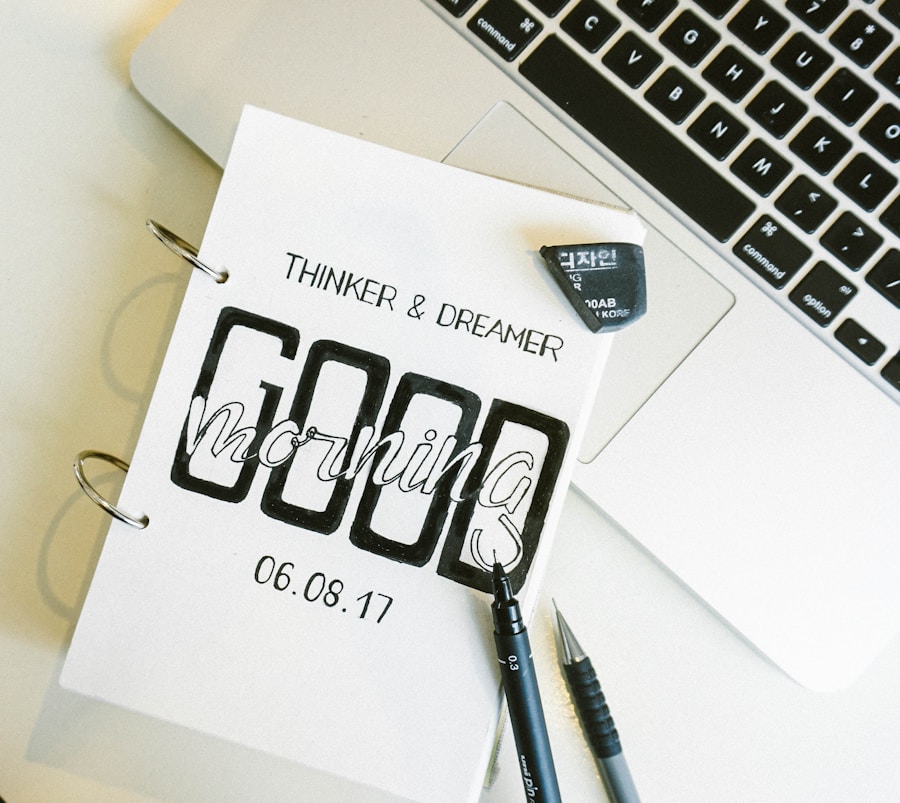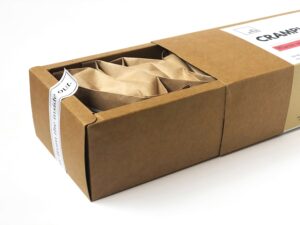Product labels serve as the first point of contact between your product and potential customers. They are not merely decorative elements; they play a crucial role in conveying essential information about your product. When you consider that consumers often make split-second decisions based on packaging, it becomes clear that a well-designed label can significantly influence purchasing behavior.
A product label encapsulates your brand’s identity, communicates its value, and can even evoke emotions that lead to a sale. Therefore, understanding the importance of product labels is fundamental to your marketing strategy. Moreover, labels are vital for compliance with regulations and standards.
Depending on your industry, there may be specific legal requirements regarding what information must be included on your product labels. This could range from nutritional information in food products to safety warnings in cosmetics. By ensuring that your labels meet these requirements, you not only protect your business from potential legal issues but also build trust with your customers.
A label that is clear, informative, and compliant signals to consumers that you care about their safety and well-being, which can enhance brand loyalty.
Key Takeaways
- Product labels are crucial for conveying important information and attracting customers.
- Understanding your target audience is essential for creating effective product labels.
- The right colors and fonts can help convey your brand message and attract attention.
- Incorporating branding elements such as logos and slogans can help build brand recognition.
- Highlighting key product information such as ingredients and benefits is important for consumers.
Identifying Your Target Audience
Before diving into the design process, it is essential to identify your target audience. Understanding who your customers are will guide every aspect of your label design, from the language you use to the visuals you incorporate. Are you targeting young adults looking for trendy products, or are you appealing to an older demographic that values tradition and reliability?
By defining your audience, you can tailor your label to resonate with their preferences and expectations. Additionally, consider conducting market research to gain insights into consumer behavior and preferences. Surveys, focus groups, and social media analytics can provide valuable information about what appeals to your target demographic.
This data will help you make informed decisions about the tone of your messaging, the style of your graphics, and even the materials used for your labels. By aligning your label design with the interests and values of your audience, you increase the likelihood of capturing their attention and driving sales.
Choosing the Right Colors and Fonts

The colors and fonts you choose for your product label can significantly impact how consumers perceive your brand. Colors evoke emotions and can influence purchasing decisions; for instance, blue often conveys trust and reliability, while red can create a sense of urgency or excitement. When selecting colors for your label, think about the message you want to communicate and how it aligns with your brand identity.
A well-thought-out color palette can enhance brand recognition and create a cohesive look across all your products. Fonts also play a critical role in label design. The typography you choose should be legible and reflect the personality of your brand.
For example, a modern sans-serif font may be suitable for a contemporary product, while a classic serif font might be more appropriate for a luxury item. Additionally, consider the size and spacing of your text; overcrowded labels can overwhelm consumers and make it difficult for them to absorb key information. Striking the right balance between aesthetics and readability is essential for creating an effective product label.
Incorporating Branding Elements
| Branding Element | Impact |
|---|---|
| Logo | Increased brand recognition by 80% |
| Color Palette | Improved brand recall by 65% |
| Typography | Enhanced brand perception by 75% |
| Brand Voice | Boosted customer loyalty by 70% |
Your product label is an extension of your brand, so it’s crucial to incorporate branding elements that reinforce your identity. This includes your logo, brand colors, and any other visual elements that are synonymous with your business. Consistency in branding helps consumers recognize your products at a glance, fostering familiarity and trust over time.
When designing your label, ensure that these elements are prominently featured but not overpowering; they should complement the overall design rather than detract from it. In addition to visual branding elements, consider incorporating a brand story or tagline that encapsulates what your business stands for. This narrative can create an emotional connection with consumers and differentiate you from competitors.
A compelling story can resonate with customers on a deeper level, making them more likely to choose your product over others. By weaving branding elements into your label design, you create a cohesive experience that reinforces your brand identity and encourages customer loyalty.
Highlighting Key Product Information
While aesthetics are important, the primary function of a product label is to convey essential information clearly and effectively. You need to highlight key details such as product name, ingredients or materials, usage instructions, and any relevant certifications or claims (e.g., organic, gluten-free). This information should be easy to find and read at a glance; consumers should not have to search for critical details amidst cluttered graphics or text.
Consider using hierarchy in your design to emphasize important information. For instance, the product name could be the most prominent element on the label, followed by supporting details in smaller text. Bullet points or icons can also help break down complex information into digestible chunks.
By prioritizing clarity and accessibility in your label design, you ensure that consumers can quickly understand what your product offers and why it’s worth their investment.
Utilizing Eye-Catching Graphics and Images

Striking a Balance
It’s crucial to ensure that any visuals used align with your brand’s message and don’t overshadow the text. Graphics can help convey complex ideas quickly. Infographics or icons can illustrate benefits or features in a way that’s easy for consumers to understand at a glance.
Functionality Meets Aesthetics
When incorporating graphics, maintain a balance between visual appeal and functionality. Every element should serve a purpose in enhancing the consumer’s understanding of the product. By thoughtfully integrating eye-catching graphics into your label design, you create an engaging experience that draws customers in.
Creating an Engaging Experience
By carefully integrating visual elements into your product label design, you can create an engaging experience that captures customers’ attention.
Ensuring Label Compliance and Legal Requirements
Navigating the legal landscape surrounding product labeling is crucial for any business owner. Depending on the type of product you are selling, there may be specific regulations governing what must be included on labels. For instance, food products often require nutritional information, while cosmetics may need ingredient lists and safety warnings.
Familiarizing yourself with these requirements is essential to avoid potential legal issues down the line. In addition to meeting legal standards, compliance also builds credibility with consumers. A label that adheres to regulations signals professionalism and transparency, which can enhance customer trust in your brand.
To ensure compliance, consider consulting with legal experts or industry professionals who can guide you through the necessary requirements for your specific market. By prioritizing compliance in your label design process, you protect both your business and your customers.
Testing and Iterating Your Label Design
Once you have developed a label design, it’s important to test its effectiveness before finalizing it for production. Gathering feedback from potential customers can provide valuable insights into how well your label resonates with them. Consider conducting focus groups or surveys to gauge reactions to different design elements such as colors, fonts, and messaging.
This feedback will help you identify areas for improvement and refine your design accordingly. Iterating on your label design is an ongoing process; consumer preferences can change over time, as can market trends. Regularly revisiting and updating your labels ensures that they remain relevant and appealing to your target audience.
By staying attuned to consumer feedback and market dynamics, you position yourself for long-term success in an ever-evolving marketplace. Ultimately, a commitment to testing and iterating will lead to a more effective product label that not only attracts attention but also drives sales. In conclusion, creating an effective product label involves a multifaceted approach that encompasses understanding its importance, identifying target audiences, choosing appropriate colors and fonts, incorporating branding elements, highlighting key information, utilizing eye-catching graphics, ensuring compliance with legal requirements, and continuously testing designs.
By paying attention to these aspects, you can develop labels that not only capture attention but also communicate value effectively—ultimately leading to increased sales and customer loyalty.
When designing labels for products, it is important to consider privacy concerns and regulations. Blur & Co. offers a comprehensive article on their website discussing the importance of privacy in product labeling. You can read more about it here. Additionally, understanding the company’s values and mission can also play a crucial role in creating effective product labels. Blur & Co. provides detailed information about their background and values on their website, which you can explore here. Lastly, it is essential to be aware of the terms and conditions surrounding product labeling to ensure compliance with regulations. Blur & Co. outlines their terms and conditions in a helpful article on their website, which you can access here.
FAQs
What is the purpose of designing labels for products?
Designing labels for products serves several purposes, including providing important information about the product, attracting customers’ attention, and conveying the brand’s identity and values.
What information should be included on product labels?
Product labels should include essential information such as the product name, ingredients, usage instructions, warnings, net weight or volume, manufacturer’s information, and any relevant certifications or regulatory compliance.
What are the key elements of an effective product label design?
An effective product label design should have clear and legible text, eye-catching visuals, a cohesive color scheme, and a layout that prioritizes important information. It should also align with the brand’s overall aesthetic and messaging.
What are some common mistakes to avoid when designing product labels?
Common mistakes to avoid when designing product labels include using illegible fonts, overcrowding the label with excessive information, neglecting to comply with regulatory requirements, and failing to differentiate the product from competitors.
How can a company ensure that their product labels are compliant with regulations?
To ensure compliance with regulations, companies should familiarize themselves with the specific labeling requirements for their product category and market. It is also advisable to seek legal counsel or regulatory experts to review the label design before production.




